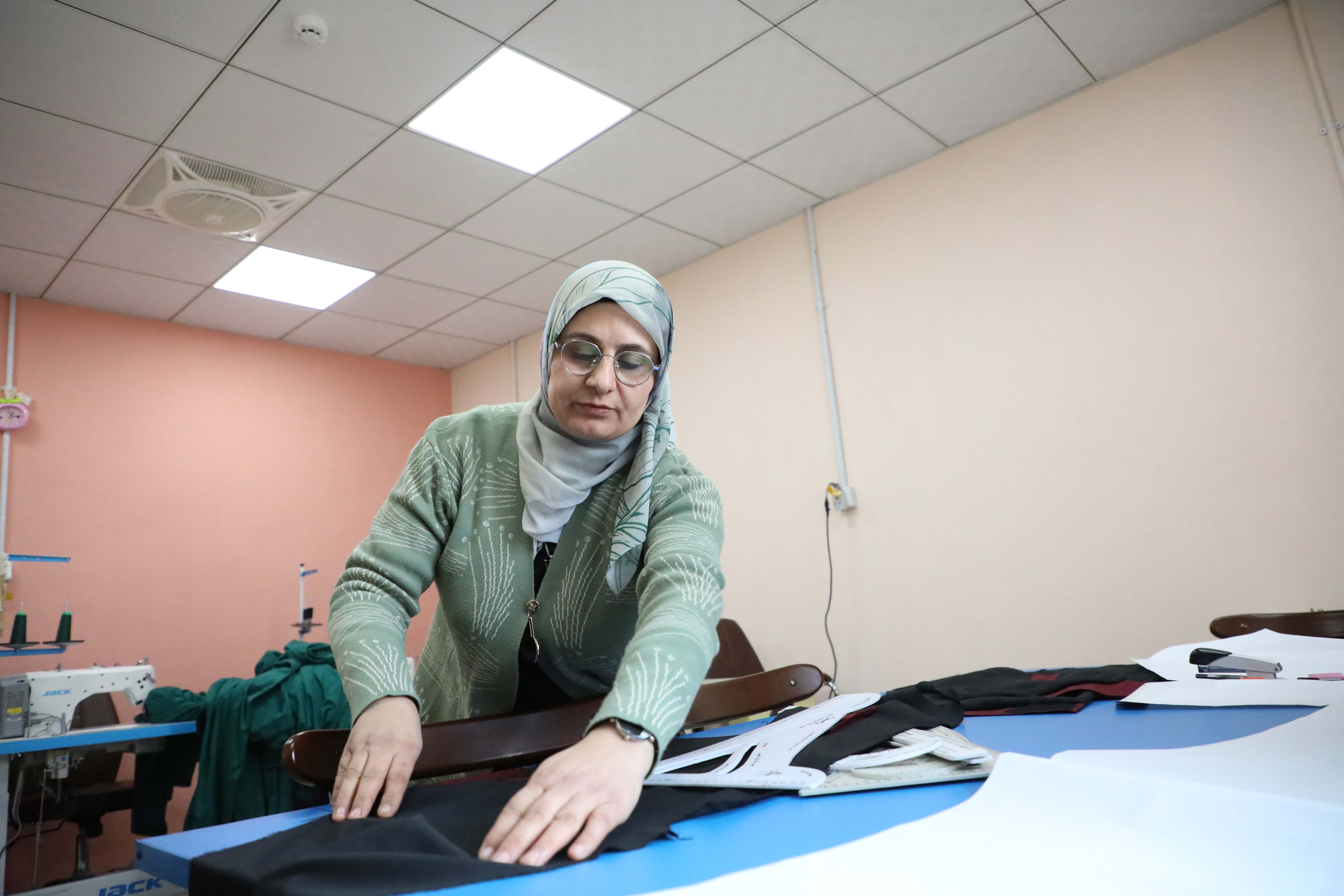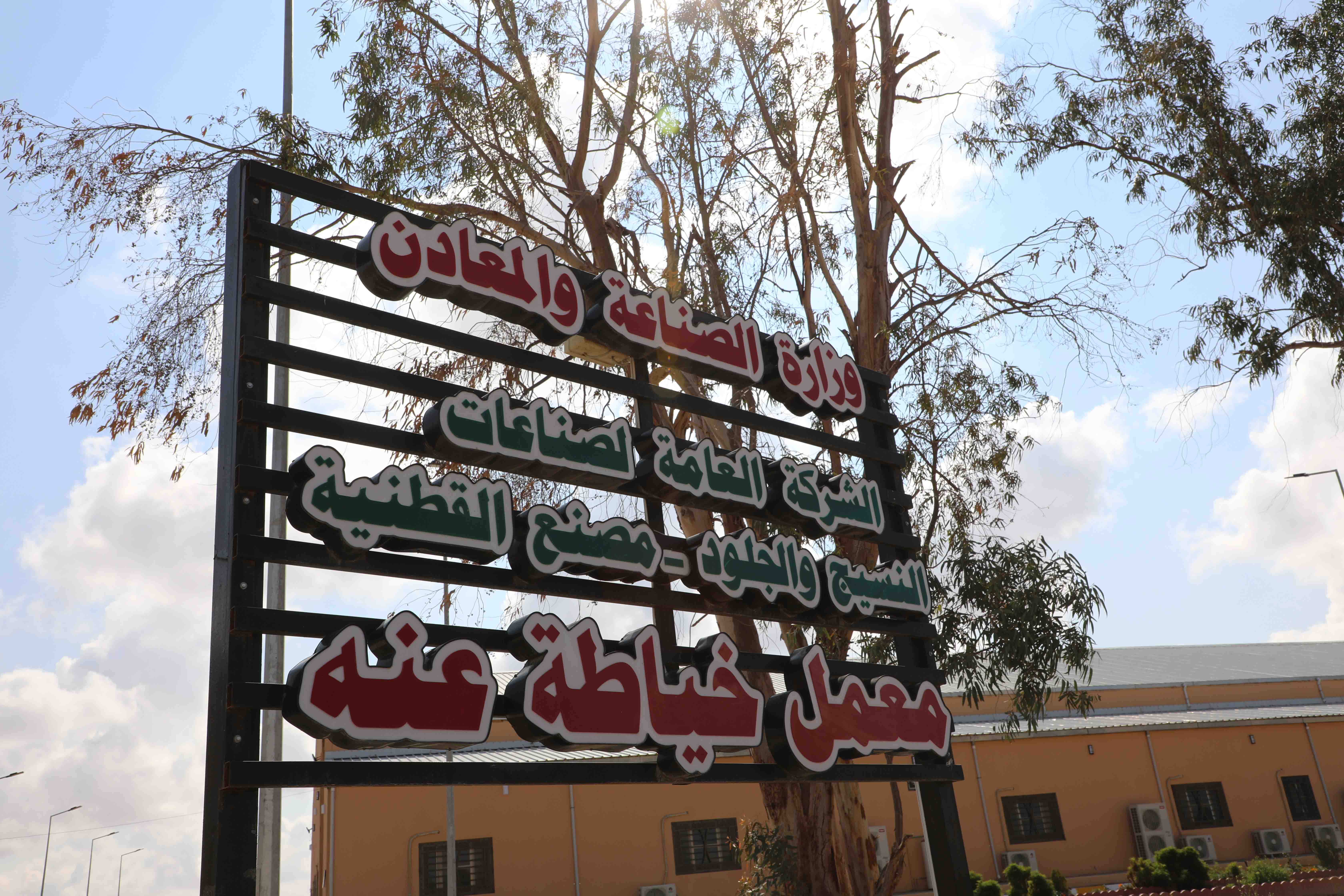Anah Sewing Factory Revival: and Modern Training to Drive Development
June 13, 2024

Jihan begins her work by cutting and tailoring clothes.
In 2023, the UNDP’s funding facility for stabilization (FFS) programme reached a milestone when the rehabilitation of the Anah sewing factory was completed. Anah, is a city in Anbar, one of the governorates most affected during ISIL’s reign of terror. According to the local community, they see this project as return to “what once was”- the normal, peaceful life they had before ISIL came into the picture.
The rehabilitation of the sewing factory in Anah, will boost employment in the city, especially for women. During the siege, women lost their homes, husbands and livelihood and this represents a major leap forward in the production of high-quality local clothing across Iraq, but also the return of economic security back to the residents of Anah.
Humble beginnings – The Origin of the Factory
Originally established in 1994 by the Ministry of Industry and Minerals, the factory was designed with a clear mission: to create vital job opportunities for the people of Anah, especially women. The city had long suffered from a severe lack of employment options, forcing many residents to either leave in search of better prospects or take up government jobs in neighboring areas like Al-Qaim and Haditha. The opening of the factory provided local residents with economic opportunities and stability they did not have before.
With this successful rehabilitation, the Anah sewing factory is, once again, set to become a beacon of economic revival and empowerment for the local community.
Supporting female-headed households
The produces clothing for all age groups, traditional men and women’s’s clothing, outfits for childrenand various other garments. T the factory has created up to 100 job opportunities, primarily for women who were the main breadwinners for their families, in mostly female-headed households. Not everyone has been training in a technological or innovative skill, therefore, the opportunity to earn a living wage in such a factory remains a lifeline for the local community.


Investing in the future! Qudwa leads the training program for the sewing factory.
Bringing the Anah Sewing Factory back to life – Four Lines of Effort
The rehabilitation project and revival of the Anah Sewing Factory was achieved using four critical steps, each contributing to bringing the factory back to life. The first step focused on the comprehensive rehabilitation of civil, mechanical, and electrical works, significantly increasing the size of the production hall by 50%. This expansion was pivotal in boosting the factory’s production capacity, transforming it into a more efficient and productive facility.



The second step involved the supply and installation of modern specialized sewing machines and other advanced equipment. This modernization was essential to keep pace with current industry standards and meet the latest specifications and ensure volume of delivery. The entire rehabilitation was carried out according to international standards to ensure that only high-quality products were produced.



Step three was ensuring the seamstresses were well-versed in operating the modern sewing machines, which was now electronic and high-speed. Training on operating the equipment as well as ensuring workers’ safety was top priority.



The fourth and final step that helped to bring the factory back to life was ensuring marketing support accompanied their engagement to secure contract with various government institutions- particularly, the Ministry of Health, Ministry of Defence and the Ministry of Interior. With these contracts, the factory produced high quality medical, military and police uniforms. These contracts snowballed into work outside of Anbar, as the factory received contracts from Basra, Babil, Kirkuk, Salah al-Din, Baghdad and others, in addition to their multi-ministerial contracts.

“Things were not the best when the area was liberated. The factory was exposed to destruction and devastation, and the area, in general, suffered a lot during the period of conflict with ISIL. Seeing the factory come back to life has been encouraging for all of us. ” Qudwa Hamdi, senior engineer, said.
Building back better
Today, after the liberation of the area, the factory is fully operational, more advanced and efficient than ever before. Equipped with over 83 modern, specialized sewing machines, as well as three ironing boards with automatic steam generators and electric steam irons, the factory stands ready to meet high production standards. The workers, trained to use this cutting-edge equipment with professional skill and precision, have significantly contributed to the factory’s successful production and revitalization.



Traditional Livelihoods Support – changing lives in Anah
Though Iraq is on the fast track of development, there are many areas across the country that greatly benefit from traditional livelihoods’ support such as sewing.
“Today we are proud of the completion of the first training course in the factory, where 28 people were trained in modern sewing methods,” Qudwa shared. These training courses ensure that seamstresses are able to produce high quality and locally made goods, efficiently. “Today we are more prepared to develop because of this training, ", she continues.
“Our training on the modern sewing methods and the foundations that we adopt contributed greatly to strengthening the industry in this factory.”. We want people to look inside Iraq when buying their clothing, there is no need to go elsewhere when we can meet the demand of this type of supply here,” Qudwa shared.


Teamwork makes the dream work! Qudwa and Kawthar bringing positivity to the factory floor.
Kawthar Hilal, head seamstress, adds: “My family is one of the beneficiaries, as I have been working here for a long time and supporting my family thanks to my work in this factory.”

Jihan Adnan, one of the trainees, said: “The training I received has made me more familiar with the new equipment, and today I can say that I am more experienced in the methods of designing and manufacturing clothes.”
The rehabilitation of the Anah Sewing Factory has brought not just itself back to life, but has breathed hope once more on an entire community of women-led households and families whose lives were made better through this project.
About the Project
The rehabilitation of this factory is considered one of the steps to advance the country’s economy and encourage work, especially for women who are committed to traditions and who are often ignored for job opportunities. The training that the workers received helped develop the factory by introducing modern sewing methods that would contribute in one way or another to the development of the factory and increase its production. In the end, the demand for products increases, which brings economic growth to the community and overall to the country.
The project was implemented through UNDP’s funding facility for stabilization, in cooperation with the Ministry of Industry in Iraq, funded by New Zealand. The training was also done under the supervision of Window 03 Capacity Building, funded by SIDA.

 Locations
Locations